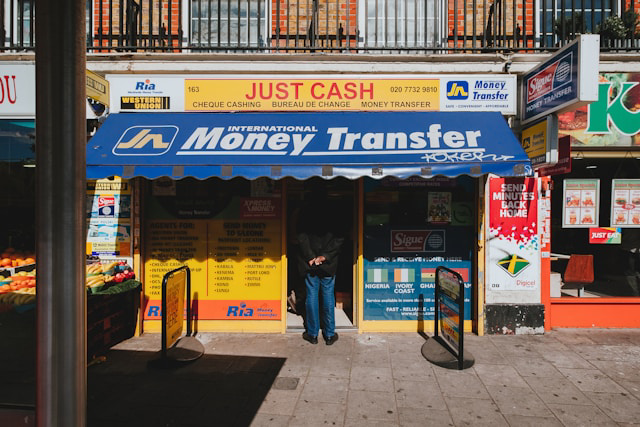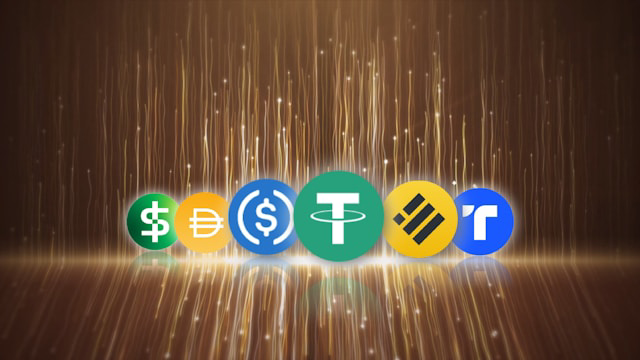
Contents
- 1. What are Stablecoins?
- 2. How Do Stablecoins Work?
- 3. Types of Stablecoins
- 4. Popular Stablecoins and Market Analysis
- 5. History and Evolution of Stablecoins
- 6. Benefits and Use Cases of Stablecoins
- 7. Stablecoin Yield and DeFi Integration
- 8. Cross-Chain Stablecoin Ecosystem
- 9. Institutional Adoption of Stablecoins
- 10. Risks and Challenges of Stablecoins
- 11. Regulation of Stablecoins
- 12. Stablecoins vs Central Bank Digital Currencies (CBDCs)
- 13. Choosing the Right Stablecoin
- 14. Stablecoins in Investment Strategy
- 15. The Future of Stablecoins
What are Stablecoins?
Definition of Stablecoins
A stablecoin is a type of cryptocurrency designed to maintain a stable value relative to a specific reference asset—most commonly, the U.S. dollar. Unlike Bitcoin or Ethereum, which can swing 10% or more in a single day, stablecoins aim to stay pegged at $1.00 (or another fixed value) through various backing mechanisms. In simple terms, they're digital dollars on the blockchain.
Think of stablecoins as the middle ground between crypto and fiat currencies. They give you the speed and transparency of blockchain transactions without the wild price swings that make traditional cryptocurrencies hard to use for everyday payments or savings. As of December 2025, the total market capitalization of stablecoins reached about $312 billion, reflecting their central role in the crypto ecosystem.
How Stablecoins Differ from Other Cryptocurrencies
Referring to the title: Stability versus speculation.
Bitcoin and Ethereum are designed to appreciate (or depreciate) freely based on market demand; in practice, they're investment assets. Stablecoins, on the other hand, are designed to hold steady value, making them practical for payments, trading, and short-term storage of wealth.
Here’s what else sets them apart:
- Volatility: Stablecoins maintain a 1:1 peg with reference assets (like USD), while other cryptocurrencies fluctuate based on supply, demand, and sentiment.
- Use cases: You probably wouldn’t pay for coffee with Bitcoin due to price changes and potentially higher fees. Stablecoins work much more like digital cash.
- Design principles: Traditional cryptos rely on scarcity and decentralization to create value. Stablecoins rely on reserves, algorithms, or collateral to preserve value.
By the way, monthly stablecoin transaction volume reportedly surpassed Visa’s in October 2025, reaching around $1.46 trillion (The Block Stablecoin Activity Data). That’s not a typo—stablecoins may be moving more money on-chain than one of the largest payment networks.
Purpose and Core Functions of Stablecoins
Stablecoins were created to solve a fundamental problem: how do you use crypto in the real world when prices change every minute?
Their core functions, emerging from their design by real use, include:
Facilitating crypto trading: Traders use stablecoins to move between positions quickly without converting back to fiat currency through a bank. This cuts fees and speeds up transactions compared to waiting days for bank transfers to clear.
Enabling cross-border payments: In regions with high inflation or currency instability, stablecoins offer a way to preserve value and send money internationally without expensive intermediaries. At least half of all crypto transaction volume in Latin America is estimated to involve stablecoins (Chainalysis Geography of Crypto 2025 report).
Providing DeFi infrastructure: Last but not least, stablecoins power decentralized finance (DeFi) by serving as the convenient base currency for lending, borrowing, and liquidity pools—without the volatility risk of other crypto assets.

Photo by Alexander Schimmeck on Unsplash
In short, stablecoins bridge traditional finance and blockchain technology. They offer the benefits of both worlds: blockchain speed and transparency paired with fiat-like stability. Sounds good, right?
Stablecoins maintain their value through a combination of economic mechanisms, technical infrastructure, and real-world backing systems. Understanding how they work means looking at three key layers: the value maintenance strategies, the technical systems that enforce stability, and the smart contracts that automate the entire process.
How Do Stablecoins Work?
Value Maintenance Mechanisms
Since these “coins” are supposed to be “stable”, at the core of every stablecoin is its backing: a value maintenance mechanism that keeps the coin pegged to its target price. However, different stablecoin types use different approaches.
Fiat-backed stablecoins maintain value by holding equivalent reserves. If there are 100 million USDT tokens in circulation, the issuer theoretically holds $100 million in bank accounts or liquid assets. As of September 2025, Tether reported holding about $112 billion in the U.S. Treasury bills as part of its reserves, accounting for roughly 80% of USDT in circulation.
On the other hand, crypto-backed stablecoins like USDS use over-collateralization: they require users to lock up more cryptocurrency than the stablecoin value they receive (often 150% or more). If your collateral drops below a certain threshold, the protocol automatically liquidates it to maintain stability. Think of it like putting down a bigger security deposit to ensure even with the volatility accounted for, you can always back what you borrow.
Algorithmic stablecoins take an entirely different route. They use supply and demand mechanics controlled by smart contracts. When the price rises above $1, the protocol mints new tokens to increase supply and bring the price down. When it falls below $1, the protocol incentivizes users to burn tokens, reducing supply and pushing the price up. (And history shows that this approach carries significant risk—we'll explore that in the algorithmic stablecoins section.)
Peg Mechanisms and Price Stability
Maintaining a stable peg in any stablecoin requires constant monitoring and adjustment. Stablecoins use several strategies to keep their price at $1.
Arbitrage incentives are the primary market-based mechanism. If a stablecoin trades at $1.02, traders can buy it from the issuer at $1 and sell it on the market for profit—this selling pressure drives the price back down. If it trades at $0.98, traders buy it cheap and redeem it with the issuer for $1, creating buying pressure that lifts the price. It’s a self-correcting system driven by profit-seeking traders.
Redemption mechanisms allow users to exchange stablecoins for the underlying asset at a fixed rate. USDC holders can, under normal conditions, redeem 1 USDC for $1 with Circle (the issuer), creating a price floor and ceiling. No matter what the market does, you know you can get your dollar back.
Similarly to market regulation on centralized platforms, liquidity pools on decentralized exchanges help absorb price fluctuations by providing deep markets where large trades don’t significantly impact price.
However, the effectiveness of these mechanisms depends on transparent reserves, quick redemption processes, and sufficient market liquidity. When any of these elements fail, stablecoins can “de-peg”—temporarily or permanently lose their $1 value.
Technical Architecture

Source: Tether Whitepaper
Stablecoins heavily rely on smart contracts (self-executing code on blockchains) to automate stability mechanisms, ideally without human intervention. These contracts handle minting, burning, collateral management, and price adjustments.
For fiat-backed stablecoins, smart contracts are relatively simple. They track total supply and enable transfers. The stability mechanism exists off-chain in traditional bank accounts and the like.
For crypto-backed stablecoins, smart contracts become more complex. They manage collateral deposits, calculate collateralization ratios, trigger liquidations when ratios fall below thresholds, and distribute liquidation penalties. The entire process runs automatically based on pre-programmed rules, so no one needs to manually check if your collateral is sufficient.
Out of all the types of stablecoins, algorithmic stablecoins use the most sophisticated smart contract systems. These contracts monitor price feeds, calculate supply adjustments, manage incentive mechanisms for burning or minting, and coordinate with governance tokens. The reason is obvious: algorithmic stability requires both robust code and favorable market conditions, and anything less sophisticated is a slippery slope. Any flaw can cascade into a “death spiral.”
Despite these systems already sounding complicated, smart contracts can’t access external data on their own. They need oracles—systems that feed real-world price information onto the blockchain.
Oracles continuously report the stablecoin’s market price from exchanges to the smart contract. When the price deviates from $1, the oracle triggers the appropriate stability mechanism. For crypto-backed stablecoins, oracles also report collateral asset prices to determine if positions should be liquidated.
Most projects use multiple oracle sources (Chainlink, Band Protocol, or custom solutions) to help prevent manipulation. If one oracle reports incorrect data, the system can use the median of all sources. This matters because oracle failures have historically caused major de-pegging events—the smart contract is only as reliable as the data it receives.
Types of Stablecoins
Let’s dive deeper into the categories of stablecoins based on the mechanisms we reviewed above. Different types use different stability mechanisms, each with distinct trade-offs in trust, decentralization, and risk.
Fiat-Backed Stablecoins
Fiat-backed stablecoins are the most straightforward type. Each token is backed by traditional currency reserves held by a centralized issuer. For every stablecoin in circulation, the company claims to hold an equivalent amount of fiat currency in a bank account or other liquid assets.
Top stablecoins like Tether (USDT) and USD Coin (USDC) fall into this category. Tether maintains the highest market dominance with about $185 billion market cap. USDC, issued by Circle, is a runner-up that follows a similar model with frequent reserve attestations.
The main advantage? Simplicity and liquidity. The main risk? You’re trusting the issuer to actually hold those reserves—which we’ll explore in the risks section.
Crypto-Backed Stablecoins
Crypto-backed stablecoins use other cryptocurrencies as collateral instead of fiat. Because crypto is volatile, these stablecoins require over-collateralization—meaning you need to lock up more value than the stablecoins you receive.

Image source: Sky
USDS (previously DAI), created by Sky (previously MakerDAO), is the prime example. If you want $100 worth of USDS, you might need to deposit $150 worth of Ethereum as collateral. This buffer protects the system when crypto prices drop. If your collateral falls too low, it gets automatically liquidated to maintain the peg.
The benefit of this category is those are more decentralized than fiat-backed options. The drawback: capital inefficiency and added complexity.
Commodity-Backed Stablecoins
Commodity-backed stablecoins are a whole other category of stablecoins which tie their value to physical assets like gold, silver, or oil. Each token represents ownership of a specific amount of the underlying commodity, stored in vaults by the issuer.
PAX Gold (PAXG) and Tether Gold (XAUT) are well-known stablecoin examples in this space. One token of each of these equals one troy ounce of gold. This approach appeals to investors wanting exposure to precious metals without the hassle of physical storage.
The trade-off is the same as with fiat-backed stablecoins: You’re still trusting a centralized entity to hold and audit the physical reserves. Storage costs and verification add complexity too.
Algorithmic Stablecoins
Delving even deeper into more crypto-native territory, algorithmic stablecoins attempt to maintain their peg without conventional collateral. Instead, they use smart contracts and economic incentives—expanding or contracting supply based on demand, similar in spirit to how central banks manage currency but vastly different in execution.
So, how do stablecoins work in this model? When the price rises above $1, the protocol mints new tokens to increase supply and push the price down. When it falls below $1, the protocol reduces supply (often by incentivizing users to burn tokens) to drive the price back up.
There’s a major problem though: algorithmic stablecoins face a catastrophic failure mode called the death spiral.
The collapse of TerraUSD (UST) in May 2022 remains the defining case study. The UST stablecoin relied on its sister token, LUNA, to maintain stability. When confidence broke and selling pressure mounted, the algorithm minted massive amounts of LUNA to defend the peg. This diluted LUNA’s value, which further undermined confidence in UST, creating a reflexive feedback loop. Within days, both tokens collapsed to near zero, wiping out roughly $40 billion in value.
The key insight here is that algorithmic stablecoins depend heavily on confidence and demand. Once that breaks, there’s no solid reserve backing to catch the fall. But this doesn’t mean all algorithmic experiments are doomed; the Terra collapse proved that purely algorithmic designs, without robust collateral, carry existential systemic risk.
Currently active examples include Djed, Ampleforth, and Fei USD but due to the less-than-perfect stability of their mechanisms, their adoption remains very limited.
Popular Stablecoins and Market Analysis
Top Stablecoins by Market Capitalization
The stablecoin market is dominated by a handful of major players, each with distinct characteristics and market positioning strategies.

Tether (USDT) remains the undisputed leader. As of December 2025, USDT reportedly commands a still impressive 60% market share; however, its gradual decline from peak figures around 80% demonstrates increasing diversity in this market.
This fiat-backed stablecoin holds a large position in the U.S. Treasury bills as part of its reserves and is one of the top buyers for the asset. Despite persistent questions about reserve transparency compared to competitors, USDT’s first-mover advantage and deep liquidity across exchanges make it the default choice for traders worldwide.
USD Coin (USDC) follows as the second-largest stablecoin. Issued by Circle, USDC has built its reputation on regulatory compliance and frequent reserve attestations from accounting firms. It’s become the preferred stablecoin for institutions and DeFi protocols that prioritize auditability and regulatory clarity.
Previously known as DAI, Sky Dollar or USDS is the most valuable crypto-backed stablecoin right now. Other notable stablecoins include Ethena USD (USDe), a synthetic dollar derivative; BUSD (with new issuance discontinued in 2024), PayPal USD (PYUSD), and USD1 by the World Liberty Financial Group.
Market Evolution and Adoption Metrics
The stablecoin market has experienced remarkable growth and recovery following the Terra Luna collapse in 2022 thanks to its ubiquitous usage.
After hitting a peak in early 2022, the market underwent a correction as algorithmic stablecoins failed and regulatory scrutiny increased. By late 2023, however, market capitalization began climbing again as fiat-backed stablecoins proved their resilience and real-world utility became increasingly apparent.
Transaction volume metrics reveal even more dramatic adoption patterns. Stablecoins may now be processing more monthly volume on-chain than one of the world’s largest payment networks.
The geography of stablecoin usage reveals fascinating adoption patterns. In the United States, the vast majority of on-chain crypto volume comes from institutional-sized transfers, with stablecoins playing a central role. In Latin America, the use case shifts dramatically. An estimated 30% to 50% of crypto transaction volume involves stablecoins, primarily used as a hedge against local currency devaluation. It means in countries experiencing high inflation, stablecoins have become essential tools for wealth preservation and cross-border commerce.
The data paints a clear picture: unlike crypto, stablecoins are decidedly not speculative tools. They’re becoming critical infrastructure for global payments, particularly in regions where traditional financial systems fall short. To understand how we got here, it helps to look back at the early experiments and major milestones that shaped today’s stablecoin landscape.
History and Evolution of Stablecoins
Early Stablecoin Development
The first stablecoins emerged around 2014, when developers started experimenting with ways to combine cryptocurrency’s programmability with traditional currency stability. These early projects aimed to solve a fundamental problem: how do you use crypto for everyday transactions when its value swings wildly?

Featured image to the "Brock Pierce Announces Dollar-backed Cryptocurrency 'Realcoin'" news report by CoinDesk
The earliest examples focused on fiat-backed models that are still dominating today but experimentation still had its place. BitUSD, launched in 2014 on the BitShares blockchain, was one of the first attempts at creating a crypto-backed stablecoin. Around the same time, Tether (USDT) launched with a simpler concept: each token represented one dollar held in reserve. This straightforward design would eventually dominate the market.
Tether gained significant traction starting in 2017. It became the go-to tool for traders who wanted to move between volatile cryptocurrencies and stable value without exiting to traditional banking.
USD Coin (USDC) launched in 2018 as a regulated alternative, emphasizing transparency and frequent attestations. This marked a shift toward compliance-focused stablecoins designed to meet institutional standards.
Notable Failures and Lessons Learned
As is clear by now, not every stablecoin experiment succeeded. The most dramatic failure in recent history came in May 2022 when TerraUSD (UST), an algorithmic stablecoin, collapsed alongside its sister token LUNA. The death spiral was swift: as UST lost its peg, the protocol minted more LUNA to defend it, which devalued LUNA further, triggering more selling, and ultimately destroying both tokens. This collapse erased roughly $40 billion in value and served as a definitive case study on algorithmic stablecoin risks.
The lesson? Stablecoins need robust and transparent backing mechanisms—whether fiat reserves, crypto over-collateralization, or hybrid models. Pure algorithmic designs remain the highest-risk category.
With the background in place, let’s turn to what most people care about day to day: how stablecoins are actually used and why they’ve become so important.
Benefits and Use Cases of Stablecoins
Stablecoins found their footing because they solve real problems. They bring predictability to volatile markets, enable fast cross-border payments, and offer financial access to millions excluded from traditional banking.
Portfolio Management and Trading
In a crypto portfolio, stablecoins can act as the safe harbor. When Bitcoin drops 15% in a day, traders convert holdings to USDT or USDC to preserve value without exiting to traditional bank accounts. This strategy called “parking capital” lets you sidestep market turbulence while staying ready to re-enter positions quickly.
Portfolio managers use stablecoins to balance risk exposure. A typical allocation might hold 20–40% in stablecoins during uncertain market conditions, reducing overall portfolio volatility while maintaining liquidity.
For active traders, stablecoins eliminate friction. Instead of converting crypto to dollars and back, paying fees twice, you trade directly between BTC/USDT or ETH/USDC pairs to save time and money.
Stablecoins also enable precise hedging strategies. During anticipated downturns, traders can shift 100% to stablecoins overnight—something impossible with traditional fiat due to banking hours and withdrawal limits.
Global Payments and Financial Inclusion
Traditional international transfers often cost 5–7% in fees and take 3–5 business days. Stablecoins flip this equation completely. You can send $1,000 internationally for under $1 in network fees, arriving in minutes instead of days.

Photo by Alistair MacRobert on Unsplash
Lower-middle income countries show the highest grassroots crypto adoption, with stablecoins playing a crucial role in everyday financial activities (Chainalysis Geography of Cryptocurrency Report 2025). In regions with limited banking infrastructure, anyone with a smartphone can hold stablecoins and by proxy, foreign currency—no credit check, no minimum balance, no branch visits required.
This matters enormously. In countries experiencing hyperinflation or banking restrictions, stablecoins provide dollar-denominated accounts accessible through basic internet connections. It’s financial access without traditional gatekeepers.
Economic Stability Applications
It’s not just crypto volatility stablecoins help with. In regions with high inflation and economic instability, stablecoins have become primary tools for wealth preservation and cross-border commerce. Citizens in countries like Turkey, Argentina, and Nigeria use stablecoins to protect savings from currency devaluation. They essentially create personal dollar accounts without needing foreign bank relationships or government permission, preserving purchasing power and greater financial sovereignty in unstable economic environments.
While for some it is a way to park capital and offset volatility, there is a use case for stablecoins that is hard to dismiss: employing them in DeFi to make these assets work.
Stablecoin Yield and DeFi Integration
One of the most popular stablecoin use cases is earning yield through DeFi protocols. A sharp contrast to holding dollars in a traditional bank account with minimal interest, stablecoins can generate returns through lending protocols, liquidity pools, and staking mechanisms—all without relying on centralized intermediaries.
Plainly put, lending DeFi protocols connect borrowers and lenders directly through smart contracts. When you deposit stablecoins like USDC or USDS into a lending platform, you’re essentially lending your funds to others who need liquidity. In return, you earn interest generated from borrowers’ payments.
The important detail is this: rates fluctuate based on supply and demand, meaning yields can range from modest percentages to double-digit APYs during periods of high borrowing demand.
The benefits of stablecoins in DeFi become clear when you compare risk profiles. While crypto-backed positions face volatility risks, stablecoin deposits maintain consistent dollar value while still earning returns. This makes them attractive for conservative crypto users who want exposure to DeFi yields without price swings.
By the way, many top stablecoins like USDT and USDC are integrated across multiple DeFi platforms, giving you flexibility to shop for the best rates. You’re not locked into one ecosystem but can move funds between protocols as opportunities shift.
Advanced DeFi Strategies
Yield farming takes basic lending a step further by strategically deploying stablecoins across multiple protocols to maximize returns. The core concept? Moving your stablecoins between different DeFi platforms to capture the highest available yields, plus earning additional rewards in the form of governance tokens.
Here’s a practical example: You might deposit stablecoins into an automated market maker (AMM) on a decentralized exchange like Uniswap or Curve, providing liquidity for trading pairs. The process is similar to lending but you earn trading fees plus protocol rewards instead of interest. Some farmers even stack strategies, using one platform’s rewards as collateral on another platform to amplify returns.

Source: Encyclopaedia Britannica
The key risk here is that complexity increases substantially. You’re managing multiple positions, tracking reward tokens, and monitoring impermanent loss (which, despite the name, can become quite permanent if you’re not careful).
Liquidity mining specifically rewards users who supply stablecoins to liquidity pools that facilitate decentralized trading. When you provide liquidity—say, depositing equal values of USDC and another token—you receive LP (liquidity provider) tokens representing your share of the pool.
The rewards come from two sources: trading fees collected whenever someone swaps through your pool, and protocol-issued tokens that incentivize liquidity providers. These mining rewards can significantly boost returns beyond basic interest rates.
The trade-off? Liquidity mining requires active management and understanding of mechanics like slippage (the difference between expected and actual trade prices) and impermanent loss. The potential returns are attractive, but these strategies demand attention and understanding beyond simply depositing funds and waiting.
Cross-Chain Stablecoin Ecosystem
Multi-Chain Deployment
Stablecoins often don’t just live on one blockchain but operate across multiple networks to maximize their utility. In simple terms, the same stablecoin can exist on Ethereum, BNB Chain, Polygon, Solana, and several other blockchains simultaneously, allowing users to move value wherever it’s most useful.
Why does this matter? Different blockchains offer different benefits: Ethereum provides the deepest liquidity and broadest DeFi integration; Solana offers faster transactions at lower costs. Polygon delivers Ethereum compatibility with minimal fees. By deploying across chains, popular stablecoins like USDT and USDC ensure users can access them regardless of which network they prefer.
On a technical level, each blockchain deployment represents a separate smart contract managing that stablecoin’s supply on that specific network. When USDC exists on Ethereum, BNB Chain, and Avalanche, Circle (the issuer) maintains three distinct smart contracts—one per chain. The important detail is that the total supply across all chains should always match the reserves held by the issuer.
This multi-chain approach directly supports stablecoin use cases like cross-border payments, DeFi participation, and trading. If you’re yield farming on Polygon but want to trade on a Solana-based DEX, you’d choose a stablecoin accessible on both networks.
Bridge Mechanisms and Associated Risks
Moving stablecoins between blockchains requires bridge mechanisms: specialized protocols that lock tokens on one chain and mint equivalent tokens on another.
Bridges operate through two main models. Lock-and-mint bridges hold your original tokens in a smart contract on Chain A while issuing wrapped versions on Chain B. Burn-and-mint bridges destroy tokens on the origin chain and create new ones on the destination chain. Both methods rely on complex smart contracts to maintain the 1:1 peg across networks.
The risks here are significant. Bridge smart contracts tend to accumulate significant amounts of value in need of close management, making them prime targets for hackers. Over the past few years, cross-chain bridges have suffered some of crypto’s largest exploits—sometimes losing hundreds of millions in a single attack. Why? Bridge security depends on multiple components: the smart contracts themselves, the validators securing cross-chain messages, and the oracle systems confirming transactions.

Photo by Aleksandr Barsukov on Unsplash
For users, this creates a practical dilemma. You gain flexibility and access to different DeFi opportunities, but you also expose your stablecoins to additional smart contract risk every time you bridge. Before moving funds across chains, verify the bridge’s security track record, check if it’s been audited, and consider whether the benefits justify the added risk. At the end of the day, many experienced users prefer to minimize bridge exposure.
These same features that attract retail and DeFi users are also attracting a very different group: institutions and corporates.
Institutional Adoption of Stablecoins
Institutional interest in stablecoins has shifted from cautious observation to active integration, driven by their utility as fast, programmable, and cost-efficient settlement tools. Corporations and banks are now testing stablecoin infrastructure not as a speculative asset class, but as a working component of treasury management and cross-border payment systems.
Corporate Treasury Applications
When it comes to corporations, exploring stablecoins as a treasury management tool is a viable potential use case, especially for international operations. By the way, holding a portion of treasury reserves in top stablecoins like USDC or USDT allows companies to bypass traditional banking delays and fees for cross-border transfers.
One practical use case involves multinational companies paying overseas contractors or suppliers. Instead of navigating wire transfer delays and foreign exchange fees, they settle invoices instantly using stablecoins. The recipient converts the stablecoin to local currency when needed, often through local exchanges or peer-to-peer platforms.
Another emerging application is yield optimization. Corporate treasurers are experimenting with DeFi lending protocols that offer competitive interest rates on stablecoin deposits—yields that sometimes exceed traditional money market funds.
The key challenge remains regulatory uncertainty. Most corporations adopting stablecoins operate in jurisdictions with clearer crypto frameworks or maintain small pilot programs to minimize compliance risk.
Banking Integration and Partnerships
Traditional banks are also entering the stablecoin space through partnerships with crypto-native issuers. Several regional banks now facilitate stablecoin issuance by holding reserve assets and providing banking infrastructure, creating a bridge between traditional finance and digital assets.
Banking executives emphasize three strategic benefits of stablecoin integration: faster settlement times (often minutes instead of days), reduced operational costs for cross-border transactions, and the ability to offer 24/7 payment rails.
However, banks face significant hurdles. Anti-money laundering (AML) compliance, reserve transparency requirements, and regulatory capital rules all complicate stablecoin operations. Many banks are adopting a “wait-and-see” approach until clearer regulations emerge, while others partner with compliant stablecoin issuers to test controlled use cases.
Of course, none of this comes without trade-offs. To use stablecoins safely, institutions and retail alike need to understand where the real risks live.
Risks and Challenges of Stablecoins
Stablecoins promise stability, but they’re not risk-free. Factors vary depending on the type of asset but there are also things to be aware of for stablecoins as a whole.
Stability and Market Risks
Any stablecoin can temporarily lose their peg during market stress for one reason or another. De-pegging happens when a stablecoin’s price drops below or rises above its target.

Credit: Investopedia / Laura Porter
The collapse of TerraUSD (UST) in May 2022 remains the most dramatic stablecoin failure. This algorithmic stablecoin lost its peg entirely, triggering what researchers call a “death spiral.” Even fiat-backed stablecoins like USDT occasionally trade slightly off-peg during extreme market volatility, though they typically recover quickly. Lack of confidence in redemption mechanisms can cause a depeg even in the most regulated stablecoin, as happened in 2023 with USDC.
Another risk factor is centralization and trust. When you hold a fiat-backed stablecoin, you’re trusting the issuer to actually hold the reserves they claim. That’s counterparty risk—the risk that the company behind the stablecoin doesn’t fulfill its obligations.
Critics of Tether have consistently questioned the composition and quality of its broader reserves compared to competitors like USDC. If reserves aren’t liquid enough or contain risky assets, redemption problems can emerge during stress.
Transparency and Systemic Risks
The problem with Tether is its lack of transparency. Unlike full audits, attestations verify that reserves existed at a specific moment but don’t deeply examine reserve quality, liquidity, or whether the issuer follows proper risk management practices. Tether has faced persistent criticism for reserve opacity despite increasing its holdings of safer assets like U.S. T-bills.
As stablecoins grow, their systemic importance increases. A major stablecoin failure could trigger contagion effects across crypto markets and potentially into traditional finance.
Security and Fraud Risks
Beyond stability issues, all stablecoins face standard crypto security risks. Smart contract vulnerabilities can be exploited by hackers. Fake stablecoin tokens are common scams, too: fraudsters create tokens with similar names to established stablecoins and trick users into swapping legitimate assets for worthless imposters.
Protection strategies matter: only interact with verified contract addresses, use hardware wallets for significant holdings, enable multi-factor authentication on exchange accounts, and verify you’re using official platforms. The largest stablecoins undergo regular security audits, but no system is completely immune to sophisticated attacks.
Those risks are one reason regulators worldwide are paying closer attention and why the rules of the game are changing.
Regulation of Stablecoins
Despite the noticeable uptick in attention, the regulatory landscape for stablecoins remains fragmented, with governments worldwide taking different approaches to oversight.
Current Regulatory Landscape
In the United States, stablecoins operate without a dedicated federal framework—though this may change soon. The bipartisan “Clarity for Payment Stablecoins Act” aims to establish clearer rules for issuers and reserve requirements. Before it, stablecoin regulation fell under a patchwork of state money transmission laws and federal securities and commodities regulations.
The European Union has taken a more proactive stance within its comprehensive Markets in Crypto-Assets (MiCA) regulation. In particular, MiCA requires stablecoin issuers to maintain adequate reserves, undergo regular audits, and obtain authorization before operating in EU markets. This represents one of the most comprehensive regulatory frameworks for stablecoins to date.
Asia-Pacific countries show varied approaches. Singapore’s Monetary Authority has introduced a licensing framework for stablecoin issuers, while Hong Kong is developing regulations to position itself as a stablecoin and digital asset hub. Japan requires many types of yen- and foreign-currency stablecoins to be issued by licensed banks or trust companies, creating a more restrictive environment.

Photo by Obi on Unsplash
Wherever they are, stablecoin issuers face significant compliance challenges, particularly regarding anti-money laundering (AML) and know-your-customer (KYC) requirements. Most major stablecoin issuers have implemented robust KYC procedures for direct users, but the decentralized nature of blockchain networks means these controls don’t always extend to secondary transactions.
Tax Considerations
Tax treatment of stablecoins varies significantly across countries, continuing to create confusion for users and investors. Most jurisdictions still treat stablecoins as property rather than currency for tax purposes—but the details matter.
In the United States, the IRS considers stablecoins as property, meaning exchanges between stablecoins and other cryptocurrencies can be taxable events. However, interpretations can vary and specific scenarios, like swapping one stablecoin for another, may fall into gray areas that require professional advice.
The European Union’s approach varies by member state. Some countries tax stablecoin transactions as currency exchanges, while others treat them as capital assets subject to capital gains tax. Germany, for example, has rules that can exempt certain cryptocurrency holdings (including stablecoins) from taxation if held for more than one year, but application details can be complex.
Future Regulatory Trends
Regulatory experts anticipate convergence toward stricter standards in the coming years. The key trend? Moving stablecoins from the gray zone of “crypto innovation” into the regulated territory of payment systems and electronic money.
Central banks are particularly focused on reserve requirements, transparency standards, and redemption guarantees. The collapse of algorithmic stablecoins like TerraUSD has accelerated calls for collateralization requirements and proof-of-reserves mandates.
As stablecoins gain adoption, central banks face a new challenge: the potential erosion of monetary sovereignty. When citizens in countries with high inflation prefer holding USD-pegged stablecoins over local currency, it undermines central banks’ ability to implement monetary policy. This “dollarization via crypto” represents a fundamental shift in how money moves across borders. Governments are responding with increased scrutiny and, in some cases, restrictions on stablecoin usage.
Regulation is one side of the story. Another big question many governments are asking is: should we just issue our own digital currency instead?
Stablecoins vs Central Bank Digital Currencies (CBDCs)
Key Differences and Design Principles
Stablecoins and Central Bank Digital Currencies (CBDCs) both aim to provide stable digital money, but they differ fundamentally in who controls them and how they operate.
Stablecoins are privately issued crypto tokens. Private companies or decentralized protocols manage these assets, and users hold them in non-custodial wallets or exchange accounts. One of the results of this design is the partial lack of reliance on traditional banking infrastructure.
CBDCs, on the other hand, are digital versions of national currencies issued and controlled directly by central banks. It’s as close to digital cash as you can get. Instead of being decentralized or permissionless like most stablecoins explained in this guide, CBDCs often operate on centralized or permissioned ledgers where the issuing authority has complete oversight.
Here’s the key part: stablecoins prioritize open access and even leave some room for privacy, while CBDCs prioritize regulatory control and monetary policy enforcement. A stablecoin transaction typically happens peer-to-peer on a public blockchain. A CBDC transaction flows through a central bank’s infrastructure.

From a design perspective, stablecoins leverage existing blockchain networks (like Ethereum or Tron) and smart contracts. CBDCs have an advantage in the form of custom, permissioned ledgers. This means CBDCs can integrate directly with a country’s existing financial system, tax collection, and anti-money laundering (AML) frameworks in ways stablecoins simply cannot.
However, for the time being, the choice between a CBDC or a private stablecoin is not one a lot of users face. Instead, you are more likely to be choosing between current players already on the stablecoin market.
Choosing the Right Stablecoin
Evaluation Framework
Start with the basics: who issues this stablecoin, and what backs it?
For fiat-backed stablecoins like USDT or USDC, check whether the issuer actually holds equivalent reserves. For crypto-backed stablecoins (like USDS), understand the collateral ratio. Over-collateralization is your safety buffer—if the backing crypto drops in value, is there enough cushion to maintain the peg? This matters more than you might think during market volatility. For algorithmic stablecoins, proceed with extreme caution. Remember TerraUSD (UST)?
Quick checklist:
- Does the issuer publish regular reserve attestations?
- Are reserves held by reputable third-party custodians?
- What is the issuer’s track record during market stress?
- Is the company registered and regulated in a stable jurisdiction?
Next, transparency separates credible stablecoins from questionable ones.
Look for monthly or quarterly attestations from reputable accounting firms, not just once-a-year audits. USDC, for instance, has historically published monthly attestation reports showing reserve composition. This matters because you’re trusting the issuer to maintain that 1:1 backing.
For decentralized stablecoins like USDS, transparency works differently. You can check collateral ratios directly on the blockchain, which removes the need to trust a single entity’s word. The data is right there, verifiable by anyone.
Red flags to watch for:
- Vague language about reserves (“substantial backing” instead of exact ratios)
- Long gaps between audit or attestation reports
- Reluctance to disclose reserve composition
- Offshore jurisdictions with weak oversight
Practical Selection Criteria
Liquidity determines how easily you can move in and out of a stablecoin without price slippage.
You’ll find USDT accepted on virtually every exchange and DeFi protocol. USDC offers marginally less liquidity but maintains a strong presence on major platforms. Sky USD, while smaller, has sufficient liquidity for most DeFi applications.
Trading volume on major exchanges, number of trading pairs available, spread between buy and sell prices and availability across multiple blockchains are all signs of liquidity.
Hopefully, we did not spend so much of this article covering stablecoin regulation for nothing. After all, regulatory status directly affects a stablecoin’s long-term viability.
USDC vs. USDT is an exemplary comparison in this regard. Circle (USDC’s issuer) has positioned itself as highly compliance-focused, with regulated operations and clear reserve policies. Tether operates more internationally but faces ongoing regulatory scrutiny in multiple jurisdictions.
Consider these compliance factors:
- Is the issuer registered as a money transmitter or equivalent?
- Does it comply with KYC/AML requirements?
- How would potential U.S. or EU regulation affect this stablecoin?
- Has the issuer faced regulatory actions or penalties?
Only after going through the steps above, match the stablecoin to your specific needs. Here’s where it gets practical.

Photo by CoinWire Japan on Unsplash
Choose USDT for maximum liquidity and universal acceptance. Consider USDC for stronger regulatory positioning and transparency, or USDS if you prefer decentralized options with on-chain verification. Both work well for parking funds between trades or in DeFi.
USDT and USDC both fit the bill for cross-border transfers, with USDT often having broader exchange support in developing markets. As a DeFi-native, USDS often integrates deeply with decentralized applications, though USDC has gained substantial DeFi adoption too. Anyway, always check which stablecoin your target protocol supports before committing.
Once you’ve chosen your stablecoin mix, the next step is figuring out how they fit into your broader investment strategy.
Stablecoins in Investment Strategy
Payments are only one of the facets of stablecoins as a phenomenon in the crypto space. As a “cash position” of the digital asset world, stablecoins offer strategic flexibility that volatile cryptocurrencies simply can’t provide.
Portfolio Integration Strategies
As mentioned before, the most common use case for stablecoins in portfolios is stabilization during market uncertainty. When crypto markets turn volatile, investors convert portions of their holdings into stablecoins, preserving value without exiting the blockchain ecosystem entirely. Smart portfolio allocation typically involves holding a portion—say, 10–30%—in stablecoins, depending on market conditions and risk tolerance. During strong bull markets, you might reduce this buffer, and vice versa.
By the way, this strategy can work particularly well for tax efficiency in certain jurisdictions—crypto-to-crypto conversions don’t always trigger taxable events the way crypto-to-fiat conversions do. (Always verify local regulations before relying on this.)
Active traders use stablecoins as parked capital, funds sitting on exchanges, ready to deploy instantly. When your target entry price hits, you execute immediately. No wire transfer delays. No bank processing times.
This approach offers several advantages: you avoid market exposure during waiting periods, maintain instant liquidity on exchanges, and eliminate the psychological pressure of watching unrealized losses during consolidation. Professional traders often keep a significant portion of their exchange balance in stablecoins specifically for tactical entries.
DeFi Investment Integration
And most excitingly, stablecoins become even more powerful when integrated into comprehensive DeFi strategies. Earn yield on idle capital through lending protocols, provide liquidity to decentralized exchanges, or participate in liquidity mining programs.
The key insight here? Stablecoins transform your portfolio from simple holdings into productive capital. Instead of earning 0% while waiting for trading opportunities, you can potentially generate meaningful APY through stablecoin lending on platforms like Aave or Compound.
This dual-purpose approach—risk management plus yield generation—makes stablecoins one of the most versatile tools in modern crypto portfolio management. Sounds good, right?
Finally, to round out the picture, let’s look ahead: how will stablecoins evolve, and what role are they likely to play in the broader financial system over the next few years?
The Future of Stablecoins

Photo by Adi Goldstein on Unsplash
Integration with Traditional Finance
Financial industry leaders are moving from “if” to “when” on stablecoin integration. Banks and payment processors increasingly view stablecoins as infrastructure rather than direct competition, a shift that’s considerably accelerating adoption roadmaps across the sector.
For one, major institutions are testing stablecoin rails for treasury operations and cross-border settlement. The appeal is straightforward: instant settlement, 24/7 availability, and potentially lower transaction costs compared to traditional correspondent banking.
According to commentary from payment networks and banking consortiums, the next few years will focus on regulatory-compliant infrastructure. Banks want the efficiency benefits without the compliance headaches. That means waiting for clear frameworks before committing significant capital.
Industry leaders emphasize that institutional adoption hinges on three pillars: transparent reserve management, regulatory clarity, and interoperability with existing payment systems. Once those pieces align, stablecoins transition from experimental to foundational.
Technological Evolution and Innovation
Stablecoin design is entering its next phase—moving beyond simple collateralization models toward hybrid systems that combine the best elements of fiat-backed stability with decentralized verification.
Emerging technologies include:
- Cross-chain native stablecoins: Protocols deploying unified stablecoins across multiple blockchains without traditional bridge risks.
- Real-time reserve auditing: On-chain proof-of-reserves using cryptographic attestation rather than periodic, point-in-time audits.
- Dynamic collateralization: Smart contracts that automatically adjust reserve ratios based on market conditions.
- Programmable compliance: Built-in KYC/AML checks at the protocol level for institutional use cases.
The lesson from algorithmic stablecoin failures like TerraUSD has pushed innovation toward transparency and robust collateralization. New designs prioritize stability mechanisms that don’t rely solely on reflexive token economics or speculative arbitrage, which proved unreliable under stress.
Developers are also exploring commodity-backed and basket-based models—bundling multiple stable assets to diversify reserve risk. The goal? Creating stablecoins that maintain their peg even during extreme market stress, something first-generation designs struggled with.
Long-term Market Outlook
By now it’s clear that stablecoins are transitioning from crypto-native tools to pieces of global financial infrastructure. It would not even be an oversimplification to say stablecoins are becoming the digital dollar rails the internet economy needs.
The competitive landscape may consolidate around regulated, transparent issuers. Tether (USDT) concentration used to pose a much higher systemic risk.
Looking ahead, stablecoins will likely power use cases we’re only beginning to imagine: instant cross-border payroll, programmable business payments, and real-time settlement for global commerce. The infrastructure is being built now. Widespread adoption follows as regulatory frameworks stabilize and traditional finance fully integrates these digital rails into their systems.
If you enjoyed this rundown, check out and subscribe to our blog for more. Give ChangeHero a follow on X, Facebook, and Telegram for live updates and more content.






